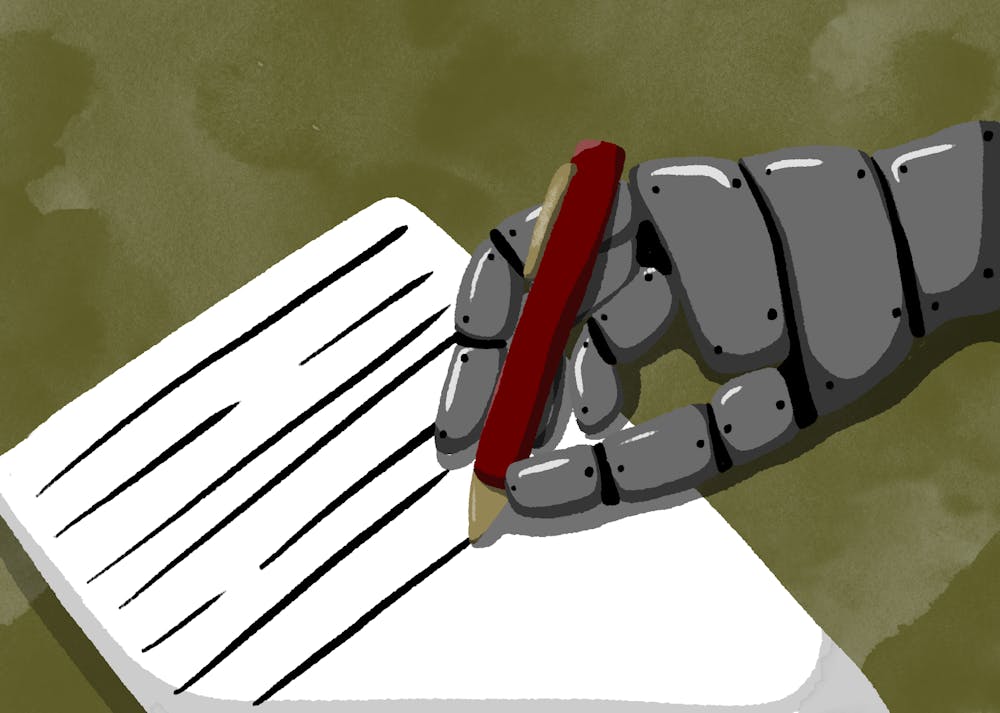ChatGPT is an artificial intelligence model that has professors worried about academic integrity violations due to its ability to imitate human writing when given prompts.
The program can emulate human conversation and writing styles and can write college-level essays, which has many educators concerned about the future of learning.
The model was launched in November last year by OpenAI and is free to use once an account is created. Easy access to ChatGPT and the program's ability to produce comprehensive essays are starting conversations about cheating, plagiarism and authorship.
Katina Michael is a professor at the School for the Future of Innovation in Society and the School of Computing and Augmented Intelligence at ASU. She is also editor-in-chief of the Institute of Electrical and Electronics Engineers Transactions on Technology and Society with a front-row seat to how chatbots affect both education and industries.
"What is plagiarism? If plagiarism is copying somebody else's work, GPT is copying. It's just not acknowledging," Michael said. "We're going to be getting into a lot of copyright law discussions soon. We're going to be getting into a lot of, 'who's the creator?' 'What's authentic mean?' If it is taken from places, where are the quotation marks?"
In Michael's classes, she is already thinking about how to keep her students from turning to ChatGPT. How questions on exams are phrased, and the clauses included in integrity agreements could change.
"Problem-based learning is one way to overcome ChatGPT style," Michael said. "I'm going to be creating new types of assignments in my classes, and they'll always be original. Each of my students doesn't get the same question, but also, I would know if it was ChatGPT because it will just be general information rather than applied."
Artificial intelligence has been changing the face of learning for decades. AI programs like Photomath and Grammarly have been helping students do their homework for years; the difference with ChatGPT is its access to large amounts of data.
The chatbot is a large language model (LLM), which is trained to learn patterns and guess the next logical word after it is given a prompt.
Not all LLMs are created equally. Its ability to complete tasks depends on its parameter count and the amount of data it is trained on. Parameters are components that the program has learned from training data; the larger the parameters, the more the program can do. ChatGPT has 175 billion parameters.
The chatbot is a simple language-based model, but when paired with a large data corpus, as ChatGPT is, it can complete impressive language tasks, said Kasim Selcuk Candan, a professor of computer science and engineering in an email.
"ChatGPT, or other similar systems and platforms that are emerging, are nothing but tools," Candan said. "Students can often be very creative in finding sometimes improper uses of cutting-edge technologies in helping them obtain better grades."
"It being able to answer complex technical questions, albeit not always correctly, being able to make comparisons and pro/con analysis, and being able to produce songs and poems with a few hints regarding topic, style and emotion, it being able to achieve this based on a simple language model that does nothing but pick the next word given the current word, is quite cool," Candan said.
While ChatGPT can write essays and answer complex questions, that does not mean what it produces is particularly good or correct. The program is prone to mistakes and misinformation, and when it comes to writing essays, it struggles with long-range dependencies. Meaning that while the text might make sense at a glance, it can not connect ideas referenced at the beginning of the essay to what is written a few pages later.
The absence of long-range dependencies is one of the more effective ways of determining if a text was written by ChatGPT, said Subbarao Kambhampati, a professor at ASU's School of Computing and Augmented Intelligence.
"If you make ChatGPT write a 10-page thing, and you read it, each page looks good. But it would be 10 individually generated pages, and that's not interesting. We don't consider that to be well-written prose, well-written prose should have connections and long-range dependencies," Kambhampati said.
However, determining this would require teachers to know how ChatGPT works and to grade papers with that knowledge in mind.
"Therefore, awareness of this technology and its capabilities and limitations is the very first step," Candan said.
Edited by Reagan Priest, Jasmine Kabiri and Anusha Natarajan
Reach the reporter at aeagerto@asu.edu and follow @audrey_eagerton on Twitter.
Like The State Press on Facebook and follow @statepress on Twitter.
Audrey is a senior studying journalism and mass communication. This is her fifth semester with The State Press. She has also worked at The Arizona Republic.




